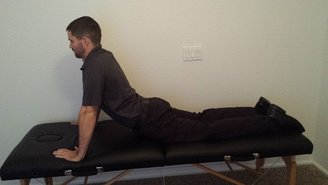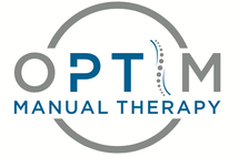- Home
- About Us
- TSPT Academy
- Online Courses
-
Resources
- Newsletter
- Business Minded Sports Physio Podcast
- Day in the Life of a Sports PT
- Residency Corner
-
Special Tests
>
-
Cervical Spine
>
- Alar Ligament Test
- Bakody's Sign
- Cervical Distraction Test
- Cervical Rotation Lateral Flexion Test
- Craniocervical Flexion Test (CCFT)
- Deep Neck Flexor Endurance Test
- Posterior-Anterior Segmental Mobility
- Segmental Mobility
- Sharp-Purser Test
- Spurling's Maneuver
- Transverse Ligament Test
- ULNT - Median
- ULNT - Radial
- ULNT - Ulnar
- Vertebral Artery Test
- Thoracic Spine >
-
Lumbar Spine/Sacroiliac Joint
>
- Active Sit-Up Test
- Alternate Gillet Test
- Crossed Straight Leg Raise Test
- Extensor Endurance Test
- FABER Test
- Fortin's Sign
- Gaenslen Test
- Gillet Test
- Gower's Sign
- Lumbar Quadrant Test
- POSH Test
- Posteroanterior Mobility
- Prone Knee Bend Test
- Prone Instability Test
- Resisted Abduction Test
- Sacral Clearing Test
- Seated Forward Flexion Test
- SIJ Compression/Distraction Test
- Slump Test
- Sphinx Test
- Spine Rotators & Multifidus Test
- Squish Test
- Standing Forward Flexion Test
- Straight Leg Raise Test
- Supine to Long Sit Test
-
Shoulder
>
- Active Compression Test
- Anterior Apprehension
- Biceps Load Test II
- Drop Arm Sign
- External Rotation Lag Sign
- Hawkins-Kennedy Impingement Sign
- Horizontal Adduction Test
- Internal Rotation Lag Sign
- Jobe Test
- Ludington's Test
- Neer Test
- Painful Arc Sign
- Pronated Load Test
- Resisted Supination External Rotation Test
- Speed's Test
- Posterior Apprehension
- Sulcus Sign
- Thoracic Outlet Tests >
- Yergason's Test
- Elbow >
- Wrist/Hand >
- Hip >
- Knee >
- Foot/Ankle >
-
Cervical Spine
>
- I want Financial Freedom
- I want Professional Growth
- I want Clinical Mastery
 I recently had an individual with low back pain for an evaluation who reported she has a history of being "hypermobile." Upon further questioning, she revealed a family history of Ehlers Danlos Syndrome (EDS). While the patient had never been diagnosed with any hypermobility disorder, I assessed her mobility using the Beighton Sign of 9, due to the genetic factor of EDS and the effect it has on collagen. For those of you unfamiliar with the Beighton scoring system, mobility is assessed at several different points (such as elbow extension, knee extension, lumbar flexion, etc.) for excessive motion. These patients will displays genu recurvatum, hyperextension of elbows, and hands flat on the floor with lumbar flexion. She was positive in all of the factors I assessed. In hypermobile individuals, we should expect excessive mobility in all directions for each joint. When I looked at my patient's lumbar mobility, she had what would appear to be "normal" or a mild loss of mobility in each direction. Without knowledge of the presence of hypermobility, we might develop an inappropriate plan of care. Typically, when we think of people with hypermobility, we immediately assume we have to assign these individuals to a stability-type program. However, patients generally with hypermobility can present with relative hypomobility following an injury. My particular patient had a traumatic even at work and met most of the criteria in the lumbar mobility treatment-based classification. I initiated lumbar mobilization and AROM exercises with some repeated motions for HEP. She has shown significant improvement thus far with the emphasis on restoring her to her "normal" hypermobility. That is not to say she doesn't require any form of stability training. Once this patient's mobility has normalized, I will redirect my plan of care to retraining movement patterns and building strength and power on them to help build her functional stability. The primary take away is that, given the circumstances, any individuals can fall into a mobility treatment plan, even hypermobile patients. -Dr. Chris Fox, PT, DPT, OCS
0 Comments
Leave a Reply. |
Dr. Brian Schwabe's NEW Book in partner with PaleoHacks!
Learn residency-level content on our
Insider Access pages We value quality PT education & CEU's. Click the MedBridge logo below for TSPT savings!Archives
July 2019
Categories
All
|








 RSS Feed
RSS Feed